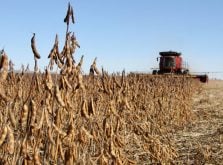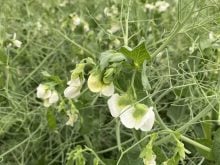PORTAGE LA PRAIRIE, Man. – Sunflower buyers are urging farmers not to
ignore their special crop just because mainstream ones like canola and
wheat have high prices right now.
Those prices could quickly fade, they told the annual meeting of the
National Sunflower Association of Canada.
“Your alternative crops that look real good right now, in eight months
may not look so good on the balance sheet,” said Darwin Hamilton of
Kalshea Trading International Ltd., an Altona, Man., sunflower marketer.
Read Also

Organic farmers urged to make better use of trade deals
Organic growers should be singing CUSMA’s praises, according to the Canadian Chamber of Commerce.
He said prices for big acreage crops are high right now because there
was a tiny harvest this year, but he thinks sunflower seed prices have
a firmer outlook for 2003.
“We have very little canola out there; we have very little wheat out
there; there’s very little barley; there are very few peas; there is
little canaryseed. (But) if they get three inches of rain in the spring
and three inches after seeding, that will carry them to an average
crop. I think you have to know … canola’s not going to be $10 a
bushel.”
Hamilton said sunflowers have less downside potential because the
primary growing area on the Prairies did not suffer from drought. There
is little likelihood of a huge acreage or yield increase next summer.
Mike Marion of Sabourin Seed Service of St. Jean Baptiste, Man., said
he doesn’t expect to see sunflower acres increase next summer, even
though prices are high now and look good for the 2003 crop.
The spot price for oilseed sunflower seeds is about 20 cents per pound,
which is “pretty darned good.”
Sabourin has just begun listing a 16 cents per lb. price for the 2003
oilseed sunflower crop, which is also above average.
Marion said he expects confectionery sunflower seed acreage to fall
slightly next spring. Many first time sunflower growers had quality and
production problems this summer, so they have probably been scared from
the market, he said.
“Guys who have been doing a lot of confectionery acres are going to
stick to it, but we’re going to lose a lot of first timers.”
Marion said confectionery sunflower seed prices are about 22 cents per
lb., but will probably be about 20 cents for the 2003 crop.
Fred Parnow of Minnesota seed supplier Seeds 2000 expects the sunflower
seed market to remain strong next year because there is little chance
of flooding it.
“The acreage of these crops in the U.S. has gone down, but the demand
still remains quite high,” said Parnow.
Flax and soybeans have stolen some American sunflower acres, he said.
But Parnow thinks U.S. acreage may slightly increase this spring in dry
areas. Sunflowers handle dry soils better than soybeans.
“I think we’ll see a switch back against soybeans,” he said.
Tim Petry of Dahlgren and Co., a Minnesota sunflower marketer, said
this year’s high commodity prices are making crops fight for acres.
“Our biggest threat in the sunflower business is that we have to
compete with some very nice crops.”
Petry said North American market demand is strong and that will offer
stability. But offshore markets are less secure. International markets
have been lost when other countries have suddenly increased production.
“I do see a threat, but I don’t know that anybody can put a finger on
what that threat is going to be,” said Petry.
The 2002 prairie sunflower harvest produced many big-seed crops, which
is good, but also many diseased crops. Sclerotinia damaged crops across
most of the growing area.
Marion said marketers have had to loosen standards and have had to
blend crops to meet buyers’ specifications.
Hamilton said there is a huge range of crop qualities on the eastern
Prairies: “It’s all over the board.”















